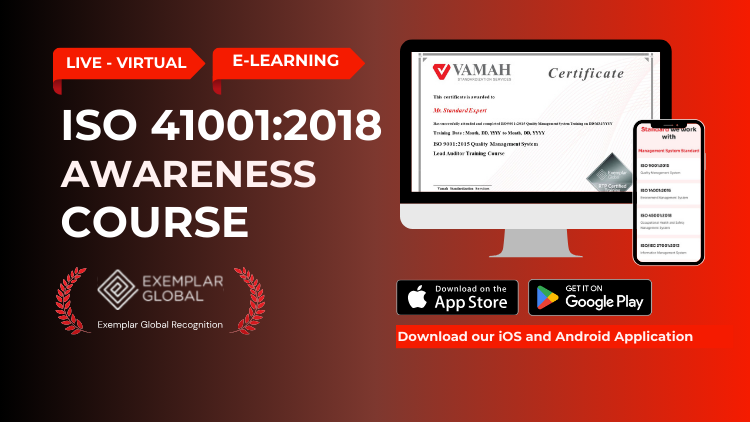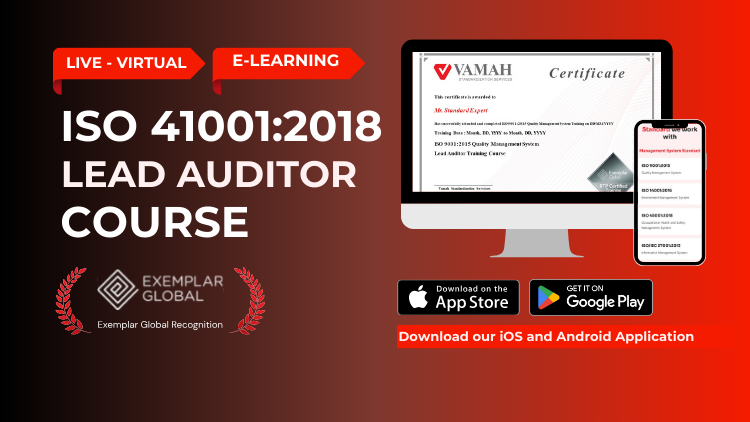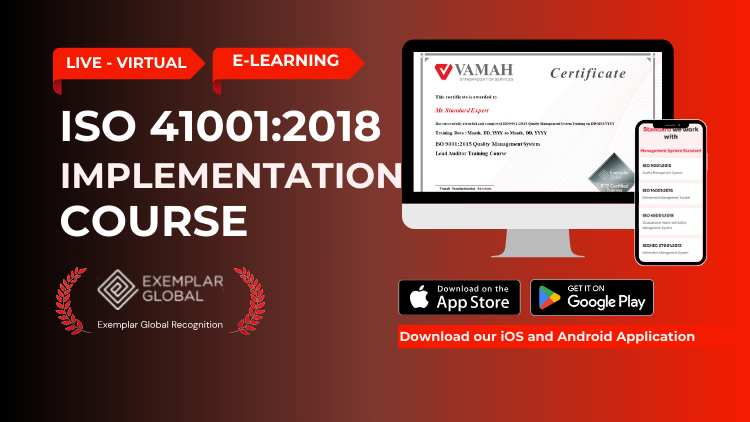ISO 41001:2018
ISO 41001:2018 is an international standard for Facility Management Systems (FMS), providing a structured framework to manage facilities effectively and efficiently. This standard aims to enhance the performance and value of facilities, ensuring they meet organizational needs and contribute to business success. ISO 41001:2018 is designed to help organizations deliver consistent, high-quality facility management services, optimize resources, and create sustainable environments.
Trainings
Our trainings are developed for ISO 41001:2018 with various level such as Awareness, Internal Auditor, Lead Auditor and Implementation.
ISO 41001:2018 Awareness Training

ISO 41001:2018 Internal Auditor Training
Our Internal Auditor Training equips individuals with the skills needed to conduct internal audits of their organization’s facility management practices.
Participants will learn about audit planning, execution, reporting, and follow-up processes. This training is crucial for evaluating FMS effectiveness and identifying opportunities for improvement.

ISO 41001:2018 Lead Auditor Training
Designed for professionals aiming to become certified lead auditors, this comprehensive course covers advanced auditing techniques, audit planning and execution, and ISO 19011 principles.
Participants will gain expertise in leading successful audits and driving continuous improvement within their organizations based on ISO 41001:2018 requirements.

ISO 41001:2018 Implementation Training
Our Implementation Workshop provides hands-on guidance for organizations in the process of implementing ISO 41001:2018.
This workshop covers developing essential documentation, including facility management policies, procedures, and work instructions.
Participants will learn how to integrate ISO 41001 requirements into existing processes to achieve a certified FMS.

DIY Templates
- Cost-Effective: Save on consultancy fees.
- Time-Saving: Ready-made documents for quick implementation.
- Comprehensive: Includes all necessary documents.
- Customizable: Easily adapt to your organization’s needs.
- Expertly Crafted: Developed by industry professionals.
- Streamlined Process: Clear instructions reduce the learning curve for team members.
Implement ISO 41001:2018 with DIY Templates
At Vamah Standardization Services LLP, we offer a range of ISO 41001:2018 DIY templates to simplify the implementation of Facility Management Systems.
Our templates include quality manuals, detailed procedures, work instructions, standardized forms, and policies. These resources are designed to help organizations achieve ISO 41001 certification efficiently and cost-effectively.
ISO 41001:2018 Consultancy
At VamahSS, we assist organizations in navigating the complexities of ISO standards implementation, certification, and continual improvement. Recognizing that every organization is unique, we provide tailored solutions to fit specific needs, making us your trusted partner in achieving ISO certification. Whether starting your ISO journey or optimizing existing processes, our consultancy services are designed to meet your objectives. We offer remote ISO consultancy services for various management system standards and accreditation standards. Choose between our two consulting options: online workshops or full project support tailored to your requirements. Contact us today to start your path to ISO certification.
Contact Us
Facility Management Management System
ISO 41001:2018 is an international standard that specifies the requirements for establishing, implementing, maintaining, and improving a Facility Management Management System (FMS). This guide provides a comprehensive overview of ISO 41001, its importance, implementation process, and business impact.
What is ISO 41001?
Why is ISO 41001 Important?
ISO 41001:2018 is crucial for organizations aiming to enhance their facilities management processes. Here’s why adopting this standard is essential:
Optimizing Facility Performance
ISO 41001 provides a framework to streamline processes, identify inefficiencies, and implement best practices, leading to improved facility performance.
Cost Reduction
Effective facilities management as per ISO 41001 reduces operational costs by lowering energy consumption, minimizing waste, and optimizing maintenance schedules, resulting in significant cost savings.
Enhancing Value Delivery
By aligning facilities management with organizational goals, ISO 41001 ensures that facilities contribute to increased productivity, better space utilization, and improved employee satisfaction.
Meeting Operational Needs
ISO 41001 ensures facilities are maintained to support daily operations, providing a safe and efficient environment for employees and stakeholders.
Achieving Strategic Goals
The standard integrates facilities management into strategic planning, ensuring alignment with broader objectives like sustainability and growth, driving continuous improvement and long-term success.
Enhancing Compliance and Risk Management
ISO 41001 helps organizations comply with relevant regulations and manage risks associated with facility operations, reducing legal issues and operational disruptions.
Promoting Continuous Improvement
The standard fosters a culture of continuous improvement, encouraging regular review and refinement of facilities management practices to maintain effectiveness in a dynamic business environment.
Adopting ISO 41001:2018 enhances facilities management capabilities, resulting in optimized performance, cost savings, and increased value delivery, supporting overall business success and competitive advantage.
-1.png?width=808&height=197&name=vamah(1)-1.png)